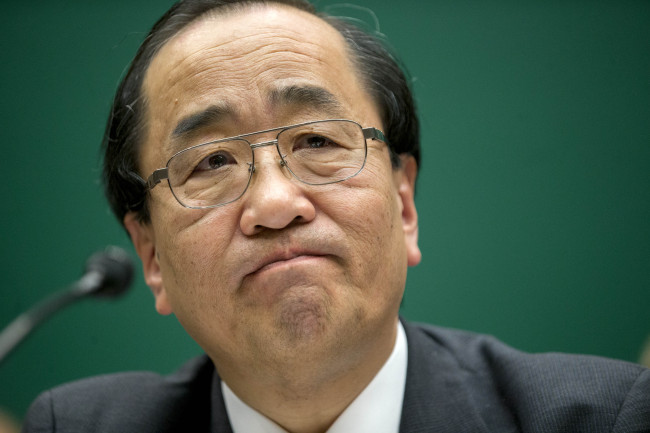WASHINGTON (AFP) ― A senior Takata Corp. executive on Wednesday defended the Japanese company’s rejection of a nationwide U.S. recall of its potentially deadly airbags, insisting that testing data did not back such an action.
But the top U.S. auto safety official warned that Takata had not yet solved the reason for shrapnel-firing airbag eruptions thought to have killed five people, and said the company and car makers could face court action for their reticence to widen recalls.
But the top U.S. auto safety official warned that Takata had not yet solved the reason for shrapnel-firing airbag eruptions thought to have killed five people, and said the company and car makers could face court action for their reticence to widen recalls.

Hiroshi Shimizu, senior vice president for quality control at the auto parts maker, told a Congressional hearing that Takata did not agree with the National Highway Traffic Safety Administration’s demand for a recall of all cars in the U.S. with the suspect Takata airbags on the driver’s side. The NHTSA had given Takata until Tuesday night to broaden the existing recall, which has been limited only to cars in hot and humid areas where the risk of an explosive airbag deployment is believed to be much higher.
But Takata rejected the call in a letter to the NHTSA Tuesday, saying its tests showed no necessity to expand the existing action, and noting that supplies of replacement inflators, the part linked to the problem, are still too few to support a full national recall program.
Shimizu told the hearing of a subcommittee of the House Energy and Commerce Committee on the issue that recent testing of thousands of inflators has only showed problems with passenger-side airbags.
Of around 4,000 airbag inflators tested in recent months, Shimizu said they have detected dangerous ruptures in about 60 passenger-side airbags, and none in driver-side airbags.
Those that ruptured, he said, all came from Florida and Puerto Rico, both hot and humid climates.
“Based on the data we are collecting ... the data still supports that we should remain focused on the regions with high temperature and high humidity,” Shimizu said.
-
Articles by Korea Herald
















![[Up close in Yeouido] Trump hinting at US troop removal in South Korea ‘election-time talk’](http://res.heraldm.com/phpwas/restmb_idxmake.php?idx=652&simg=/content/image/2024/05/21/20240521050695_0.jpg&u=)
![[KH Explains] Hong Kong rally spurs hope for ELS loss mitigation](http://res.heraldm.com/phpwas/restmb_idxmake.php?idx=652&simg=/content/image/2024/05/21/20240521050686_0.jpg&u=)

![[Today’s K-pop] Stray Kids hit Billboard’s Hot 100 with Charlie Puth collab](http://res.heraldm.com/phpwas/restmb_idxmake.php?idx=642&simg=/content/image/2024/05/21/20240521050699_0.jpg&u=20240521182133)